That Fit Friend is supported by its readers. I [Jake Boly] run this site myself and buy the gear I review. If you purchase through my site, I may earn commissions on sales, read more here!
Table of Contents+
So you’re on the market for gym shoes and you’re feeling overwhelmed. Hey, I get it — I’ve literally made a living off of reviewing gym shoes, and sometimes I even feel like my head spins with the countless options out there.
We have gym shoes that are hyper-specific to CrossFit, models built a little more well-rounded for cross-training, and don’t get me started down the rabbit hole of different shoes working for certain types of feet, like wide-feet-friendly training shoes.
If you’re new here, welcome. My name’s Jake. Gym shoes are my life and have been for close to a decade. I made this list to be all-encompassing for my generalist friends on the market for new workout shoes.
I run this site independently, have a brick & mortar for fitness shoes in St. Louis, Missouri (come visit!), and have been a personal trainer for 12 years with an M.S. in Sports Science. For those looking into new gym shoes, I’m your guy.
Gym Shoes Buying Guide
- For Lifting Heavy: Adidas Dropset Trainer 3
- What My Community Suggests for Women: Nike Metcon 9
- For the Men: UA TriBase Reign 6
- For Flatter Feet: Born Primitive Savage 1
- For Classes and HIIT: Nike Free Metcon 6
- For Width and Toe Splay: Born Primitive Savage 1
- For Arch Support: Inov-8 F-Lite Max
- For All-Day Wear and Walking: On Cloud X 4
That Fit Friend is an independent resource for athletes and lifters looking for unbiased shoe reviews. I (Jake) buy the shoes I review. No retailers or companies have influenced my picks in this list.
Quick Sizing Tip
None of the picks below matter if you don’t get your sizing right. Generally speaking, for gym shoes, you’ll want about a thumb’s width of space at the end of your toe box.
- Now, this can vary a little from lifter to lifter, but if you start with this rule of thumb (hehe…), then you’ll be well on your way. Don’t be shocked if it takes a few shoes to find something that fits. It’s all part of the process of learning your foot/preferences.
- When in doubt, go to a shoe store and use either their footwear scanner (I have one in my store; generally, specialty shoe stores have them) or Brannock device. This will give you your length and width, which makes it much easier to cross-reference your foot’s size and sizing charts.
- You can also trace your foot on a piece of paper and measure its length (use the longest dimensions) and its width (use the widest part of your forefoot). Pro-tip: Make sure you put weight on it to get a true read on your foot’s size when pressure causes it to splay and spread.
What I Wear When I’m Lifting Heavy | Adidas Dropset Trainer 3
Author’s Note: This is a model that was changed and updated in the November update. I swapped out the Dropset 2 for the 3, as it’s harder to find the 2, and I think the 3 fills this spot nicely.
- Price: $130
- Heel-to-Toe Drop: 6mm
- Weight: 10.45 oz (for my size 10 model)
- Removable Insole: Yes
- Sizing: True to Size
- For More Depth: Read My Review
Why They Work Well for Lifting
The Adidas Dropset Trainer 3 is a strong continuation of the popular Dropset 2. Adidas kept the midsole and outsole the same in the 3, which was a good move because these are the best components of this shoe for lifting, in my opinion.
The midsole is built with a dual-density foam so you get a little more flexibility in the forefoot, which is great for things like cleans and lunges. Then, in the midfoot and heel, the foam is more dense, which is fantastic for heavy machine work and squats.
The reworked upper in this shoe is also not a bad change. This change has increased this shoe’s durability for cross-training and HIIT, which is cool because this shoe isn’t necessarily designed for CrossFit, but you can use them for class here and there if you like to sprinkle them in.
Another thing to like about the Dropset 3 is that it has a wider toe box. When lifting, this is great to have because you get more room for toe splay which translates to better power production through the floor and balance.
My Community’s Pick for Women | Nike Metcon 9
- Price: $150
- Heel-to-Toe Drop: 4mm
- Weight: 12.4 oz (for my size 10 model)
- Removable Insole: Yes
- Sizing: True to Size
- For More Info Read My Review
Why the Community Likes Them
The Nike Metcon 9 is earning the top pick for women. This model is a really strong, well-rounded gym shoe for gym-goers who like to lift, do class workouts here and there, and do athletic-style training.
Compared to the Nike Metcon 8, the Metcon 9 has received a few updates that give it a little more versatility in the gym. For example, this shoe still features a TPU plate in the heel, but it’s been reworked to make it feel better for a wider range of versatile training contexts.
The outsole has a good level of traction when training on different surfaces and the medial and lateral midfoot outsole wraps help this shoe’s durability for CrossFit contexts where you’ll be having more abrasion on the top of the shoe. This shoe’s wider toe box is also a perk.
It’s important to note that the TPU insert does take away from the Metcon 9’s running performance, so if you want a training shoe for lifting and running, I’d look at the second and third picks below.
Great Pick for Guys | UA TriBase Reign 6
- Price: $130
- Heel-to-Toe Drop: 2mm
- Weight: 14.25 oz (for my size 10 model)
- Removable Insole: Yes
- Sizing: True to Size
- For More Info: Read My Review
Why They Work for Men
The Under Armour TriBase Reign 6 is an awesome option for guys. In my opinion, this shoe is a stellar upgrade from the UA TriBase Reign 5. I’m calling it now, but the UA TriBase Reign 6 is going to be one of the top gym shoes in 2024.
I’m taking the UA TriBase Reign 6 as my top pick for men for three key reasons. First, they’re a really good well-rounded gym shoe for lifting, CrossFit, athletic-style training, HIIT workouts, and even sprints or short tempo runs (100-400-meter bouts).
Second, I like the overall width of this shoe. This model fits my E-width feet well and if you have medium to slightly wider feet you’ll enjoy this shoe’s fit. The width increase in this model I think does a better job of feeding into the anatomical needs of men’s feet.
Third and lastly, I like the TriBase tech in this shoe’s outsole, drop-in midsole, and 2mm heel-to-toe drop. The blend of the midsole and outsole give this shoe a nice stable, yet versatile feeling and this can be a good model for gym-goers who like lower heel-to-toe drops.
Good Option for Flat Feet | Born Primitive Savage 1
- Price: $130
- Heel-to-Toe Drop: 4mm
- Weight: 12.7 oz (for my size 10 model)
- Removable Insole: Yes
- Sizing: True to Size
- For More Info: Read My Review
Why This Shoe Works Well for Flat Feet
The Born Primitive Savage 1 can be a great option for flat feet. This shoe is built with a wider toe box and midfoot that doesn’t have a super aggressive taper so it can be great for flatter arches and feet.
In the gym, the Born Primitive Savage 1 delivers a well-rounded performance. This model has excelled for my CrossFit WODs, heavier leg days, and athletic-focused sessions.
The dual-density midsole in the Savage 1 has supported my 500 lb deadlifts with no compression issues and the upper on this shoe has held up well to things like rope climbs and burpees. This shoe also has a lower stack height, which gives you more ground feel.
I think if you have flatter feet and enjoy shoes in the gym that feel more “minimalist” and prioritize needing stability and durability with your workout sessions, then the Born Primitive Savage 1 will be a good pick for you.
What I Wear for HIIT | Nike Free Metcon 6
Author’s Note: The Free Metcon 6 replaced the Free Metcon 5 in this section. I like the 6, and think it delivers from a pure HIIT context, but the 5 is a slightly stronger shoe for lifting with a blend of HIIT. If you can find them, I’d suggest considering the 5, too!
- Price: $120
- Heel-to-Toe Drop: 5mm (per Nike’s support team)
- Weight: 11.55 oz
- Removable Insole: Yes
- Sizing: True to Size.
- For More Info: Read My Review
Why They’re Good for HIIT/Classes
The Free Metcon 6 does a good job from a pure HIIT and class-focused workout context. I like the Free midsole, and this shoe somewhat reminds me of the first-ever Free X Metcon, which has been my favorite model to date. RIP to a legend.
The midsole is responsive and comfortable, making this shoe easy to wear in a wide range of HIIT workouts. For example, if you’re jump roping or doing multi-directional work, this shoe should be pretty forgiving on your body and doesn’t feel too dense.
The upper also does a good job of locking down the feet when doing explosive work. In a lot of class settings, you’ll be doing a blend of strength and explosive and transitioning through different exercises, and this model shouldn’t give you any issues there.
My only gripe with this, and I want to make it known even though I do enjoy the Free Metcon 6, is that its durability can be shoddy when doing sled pushes on turf. I split my shoe’s midsole, pushing 5-6 plates, so if that’s a big ask for you, go with the 5 or something like the Inov8 F Fly.
What I Recommend for Wide Feet | Born Primitive Savage 1
- Price: $130
- Heel-to-Toe Drop: 4mm
- Weight: 12.7 oz (for my size 10 model)
- Removable Insole: Yes
- Sizing: True to size for most.
- For More Info:Read My Review
Why They’re Solid for Wide Feet
Yep, the BP Savage 1 is making the list again. The Born Primitive Savage 1 is my favorite gym shoe for wide feet. This model’s toe box rivals some barefoot shoe’s widths which makes it an awesome option for feet that go up to EE-widths and sometimes more.
This model’s wider anatomical toe box, blended with its flatter midfoot construction, gives it a nice flat feeling when training. The upper of this shoe also does a good job regarding security when moving forward, backward, and laterally.
This shoe has a dense midsole for heavy lifting and good durability for CrossFit and cross-training workouts. If you like more simplistic training shoes, you’ll resonate with the Savage 1’s construction.
Whether you need a shoe for 500 lb deadlifts and heavy squats or you want a model for cross-training and CrossFit WODs, the Born Primitive Savage 1 should deliver for all of your training needs.
What I Like for High Arches | Inov-8 F-Lite Max
Author’s Note: The F-Lite Max is the training shoe replacing the 235 V3, 260 V2, and G 300 from Inov8. In my opinion, the Max is a much stronger shoe and really ties all three of these together well.
- Price: $150
- Heel-to-Toe Drop: 6mm
- Weight: 12 oz (for my size 10 model)
- Removable Insole: Yes
- Sizing: True to Size
- For More Info: Read My Review
Why the F-Lite Max Works for Higher Arches
The Inov-8 F-Lite Max is awesome for multiple reasons. In the context of lifters needing a shoe for arch support, this shoe tends to work really well, and it has a wider forefoot, so it gives you good room for toe splay when training. Yes, a wider shoe with some arch support? A unicorn.
In the context of training, the F-Lite Max will be a great option for anyone needing a shoe for CrossFit and lifting. This model’s midsole is stable for heavy sessions and responsive enough for explosive movements that you’ll be performing in your general CrossFit WODs and cross-training sessions.
Across all of my sessions, I’ve also enjoyed the durability of this shoe. The rubber/TPU cage around the midfoot resists abrasion well, and it promotes a better “lockdown” feeling when moving explosively.
My only gripe with this shoe’s performance is that it does have the TPU insert in the heel area, which can hinder its performance when running over a mile distance. If you need a shoe with arch support that’s a little more hybrid in nature, look into something like the Free Metcon 6.
My Favorite Pick for Walking | On Cloud X 4
Author’s Note: The Cloud X 4 is replacing the X 3 in this list. The X 4 has been what I’d call a lateral update. In that, it’s not necessarily worse or better than the 3. It does have a few quality-of-life updates, which I like and why it’s earned this spot.
- Price: $150
- Heel-to-Toe Drop: 8mm
- Weight: 9.05 oz (for my size 10 model)
- Removable Insole: Yes
- Sizing: True to Size
- For More Info: Read My Review
Why They Work for Walking
The On Cloud X 4 is earning my top pick for walking. This is one of those training shoes that you can use for travel and things like walking around all day at Disney and having them stay relatively comfortable.
The CloudTec midsole is what gives this shoe its comfort for walking. It tends to move well with the feet and has enough give to give this shoe a comfortable ride while staying dense enough to offer a bit of support, too. They don’t feel overly plush like running shoes, for example.
I also like the upper for this performance ask, and in the gym, it does have enough security to support cross-training and classes while being lightweight and breathable for all-day wear. If you’ve worn On shoes before, like the 5, and enjoy their breathability, this shoe will feel similar.
Note that while the Cloud X 4 works great for walking and general training, these won’t be the best trainers for walking AND lifting heavy. If you’re after a trainer that works great for daily wear and lifting heavy, then you’ll want to explore options like the Haze Trainer.
How to Get Your Sizing Right
As opposed to running shoes that have a fairly formulaic method for sizing, gym shoes can be a little different. Sizing discrepancies in gym shoes can vary for three key reasons.
- Different forms of training will require different types of fit. For example, if you’re doing explosive training, you’ll generally want shoes that hug the feet fairly well to prevent sliding around or feeling unstable.
- Different foot anatomies will require different spaces in the toe box. For example, if you have wide feet, then you’ll typically want a little more room at the end of your toe box for both comfort and performance reasons.
- Different preferences can shift how we want our shoes to fit. Some like their shoes to fit a little looser, while others like snugger shoes.
My Sizing Recommendations
I recommend having anywhere from .2-.6 inches of room at the end of your shoe’s toe box.
If you have wide feet or like more room in your shoe’s toe box, go with a thumb’s width at the end of your longest toe.
Keep In Mind
As a rule of thumb (no pun intended) and on the topic of a shoe being too snug, if you have so much room at the end of your toe box that you’re experiencing heel slip when training, then you’ll want to size down and aim for the lower end of the range mentioned above.
Regarding sizing, there’s no “one-size-fits-all” answer (pun intended). Explore different models and find shoes with the last constructions that align with your feet best and allow you to perform your best.
My Gym Shoe Buying Tips
The ideal shoes for you will be dependent on variables like how you train and your foot anatomy. It’s normal to experiment with different shoes as you find what works best for you. I know, it can be tedious but it’s worth spending the time trying different models.
Remember that every company uses different shoe lasts (molds) to construct their shoes, so if one shoe doesn’t fit your feet perfectly, another shoe likely will — don’t lose hope. I spend most of my days answering questions about this exact topic on my YouTube channel and on written reviews.
Buying Tip 1 — Midsole, Outsole, and Upper Are Key
Multiple construction features can manipulate a shoe’s performance. A shoe’s midsole, outsole, and upper are three of the big features that can influence stability, responsiveness, security, and durability.
I would suggest assessing these three heaviest when looking for your next gym shoes. These will dictate your shoe’s “feel” when training and how long it lasts in terms of durability.
Buying Tip 2 — Your Workout Specificity Matter
Your shoes should always reflect your training and get more specific to reflect how you train. For example, if you do something specific like CrossFit, then you’ll want to find shoes that are optimal for this context.
The same holds true for HIIT, lifting, and so forth. This is why I include categories in my round-ups. Please ask questions about shoes featured in this list as you have them.
How I Test Shoes
I’ve been reviewing shoes for over seven years, and in that time, I’ve refined how I test and review shoes probably 100 times. As someone who’s overanalytical and obsessed with nuance and details — this is how I am, and here’s how I test.
- Stability Tests: This entails assessing a shoe’s midsole and its limits for promoting stability when training heavy. How much can I squat, deadlift, and lift in this shoe while feeling safe and balanced?
- Versatility Tests: This revolves around testing a shoe’s responsiveness, comfort, and breathability. Can I wear this shoe for a HIIT workout, class, and short run and not feel beat up afterward?
- Durability Tests: To assess durability, I’m purposely trying to beat the heck out of a shoe’s upper and midsole. Is this shoe’s price point worth the money? What’s the investment I’m getting out of this shoe?
- Value Tests: Inflation is very real in the world of gym shoes. Value tests take everything above and cross-reference a shoe’s performance compared to its peers. Is it worth the money compared to alternatives A, B, and C?
Right now, in my career, my system above has proven to work via my community, and I’m constantly fine-tuning tiny details to make my reviews more thorough and digestible. It’s a constant project I’m working on as the game changes and evolves.
Final Thoughts
When looking into the best gym shoes, I’d suggest exploring three things: your training goals, needs, and wants. If you can nail down the specific training asks that you have from your shoes, then you can make the best investment for your individual goals.
Whether you plan to lift heavy, do HIIT workouts, or take classes here and there, there’s a gym shoe that accommodates your foot’s anatomy and training needs.
If you have additional questions on any of the shoes featured in this article, drop a comment below or reach out to me personally via Instagram (@jake_boly or @that_fit_friend).

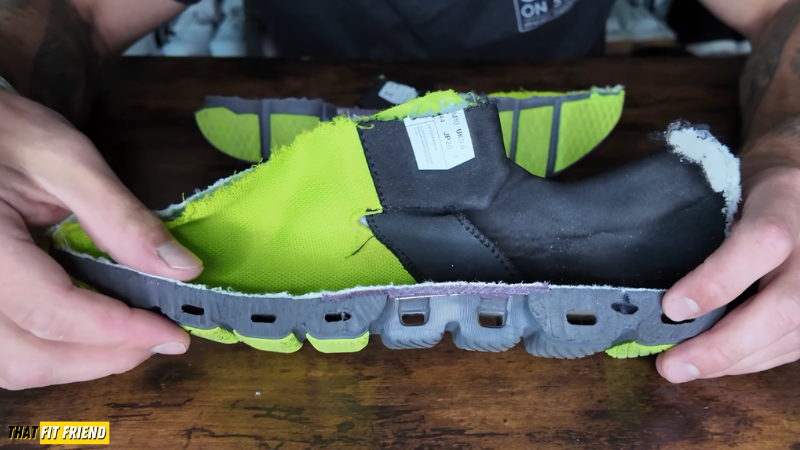
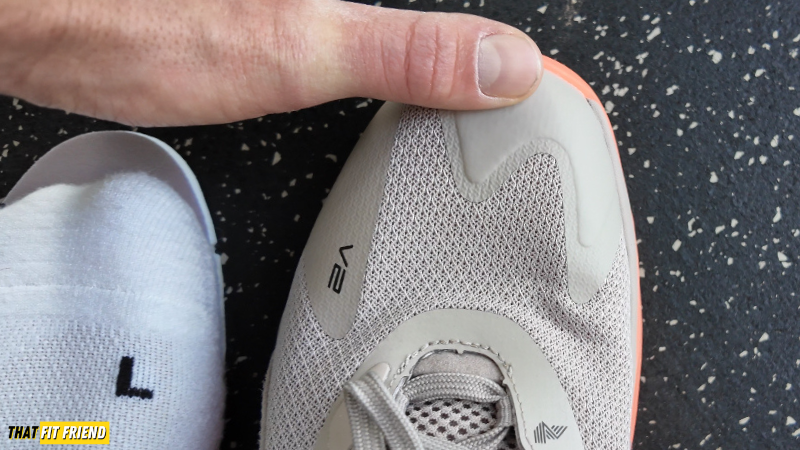
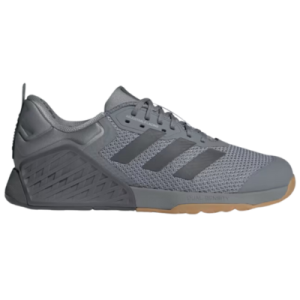
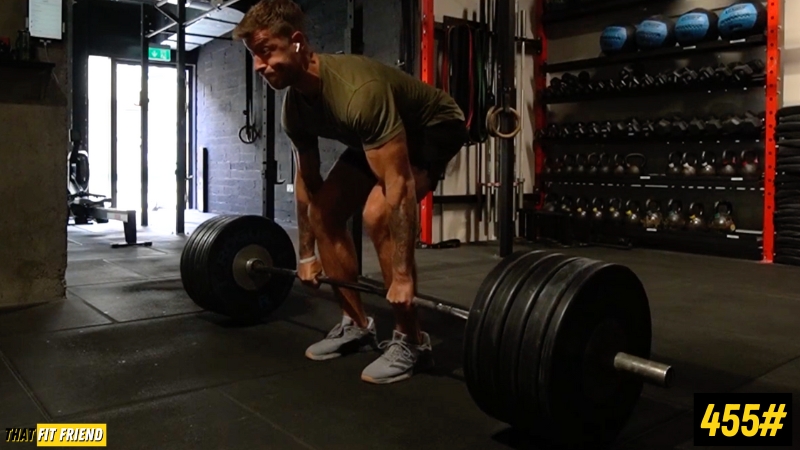

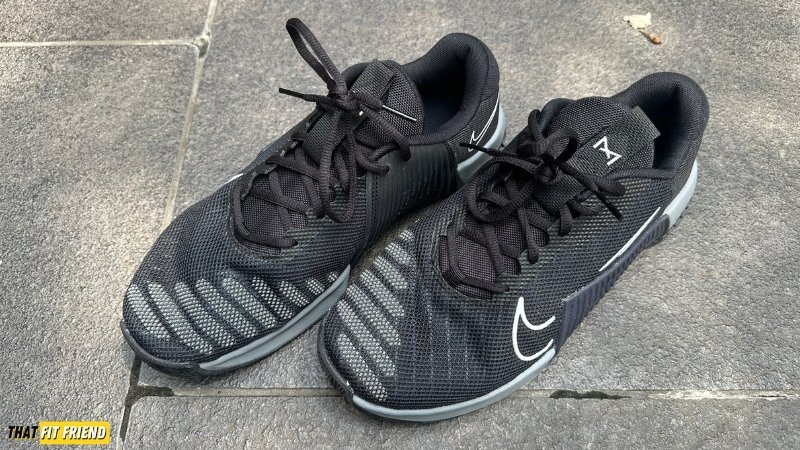




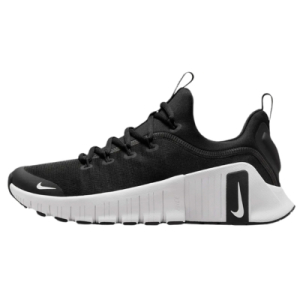


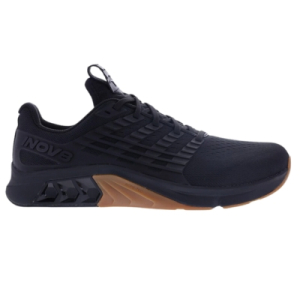
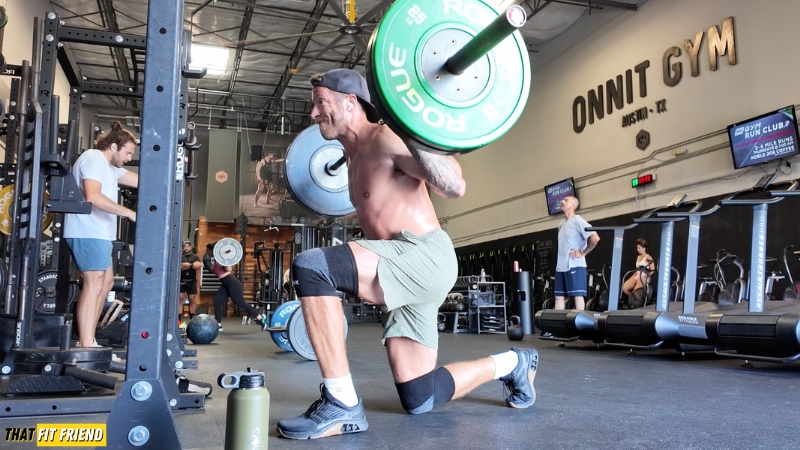
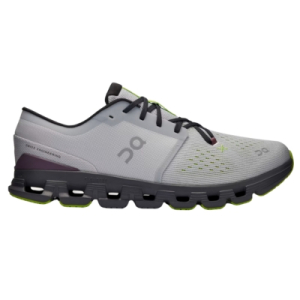
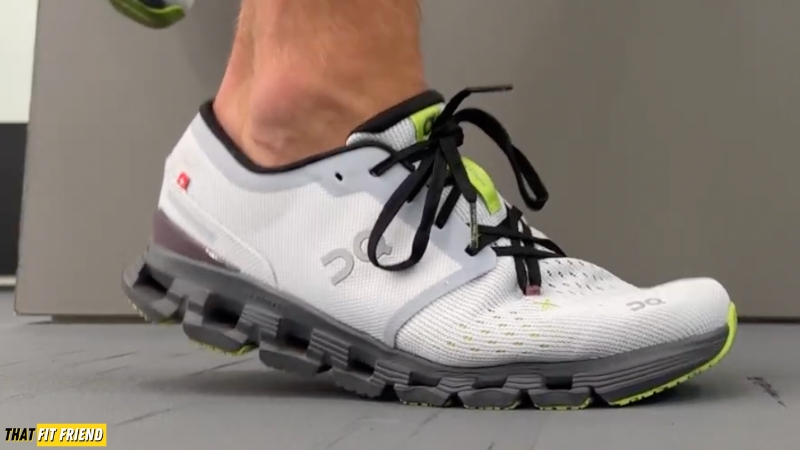



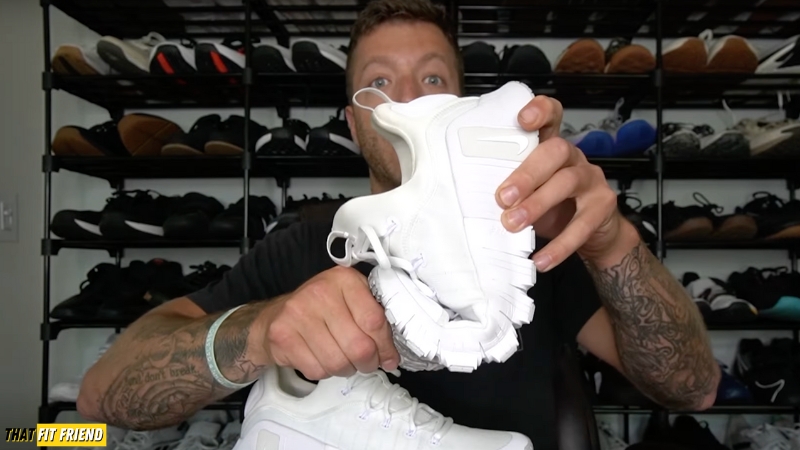


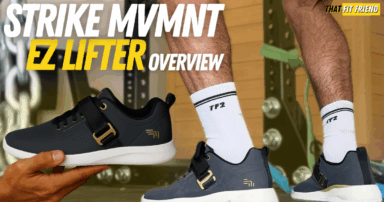
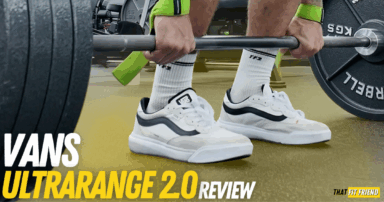
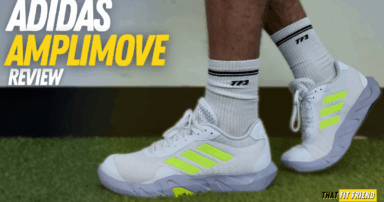
Gary Z
I purchased the UA Reign 5 (because they were on sale) based on this article. I do general weight lifting – not powerlifting or CrossFit – in these shoes and they are stable and have held up really well. Thanks for the review, Jake.
Heck yeah, I love hearing that. Thank you for taking the time to share and follow up!
KJ
I loved my OnClouds but felt they didn’t wear well in the toe area. Do you think that’s consistent with all their models? I did not have the one you recommended. Also, if I need more room in toebox area should I be looking at wide models always?
Yeah, On shoes can be super inconsistent with their durability, tbh! I’ve had pairs last a year and I’ve had pairs break down in a few months. I always suggest buying models through companies like REI when possible that way you’ll have a better chance of returning/replacing them. It wouldn’t hurt to try some wider models to see if they align with your anatomy better as that could also be why the toe durability suffered pretty quickly!